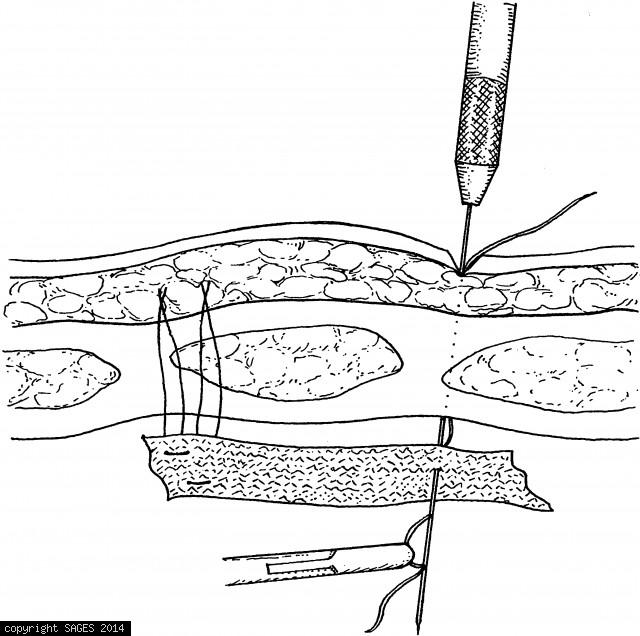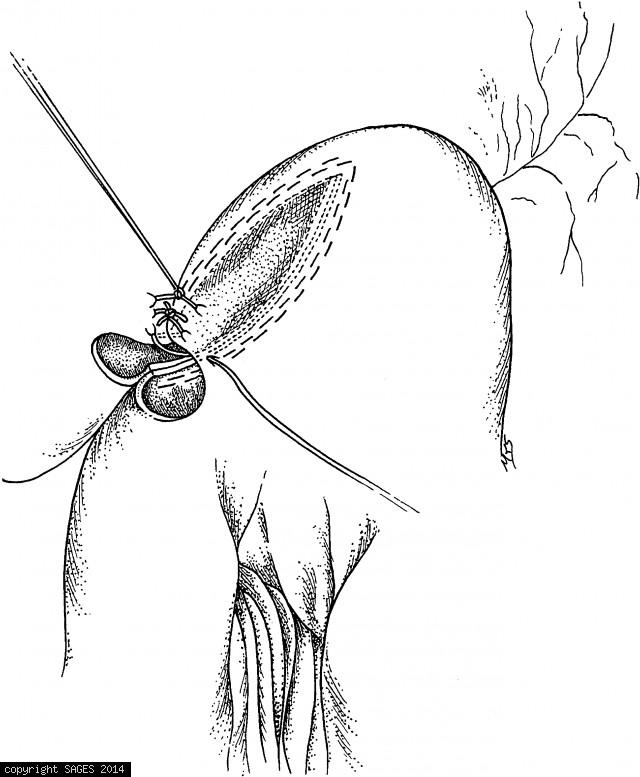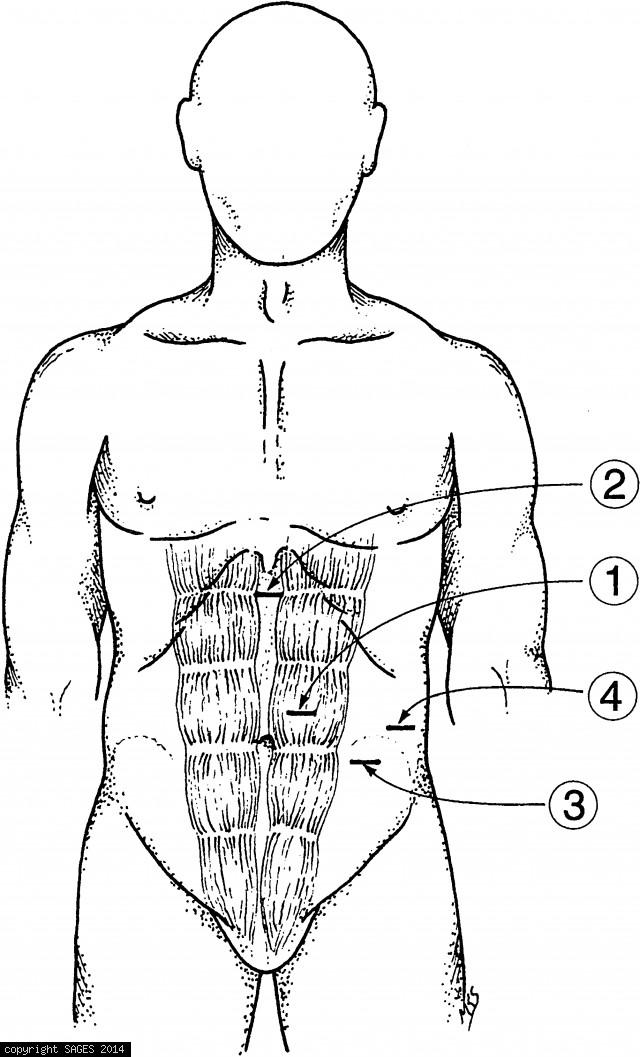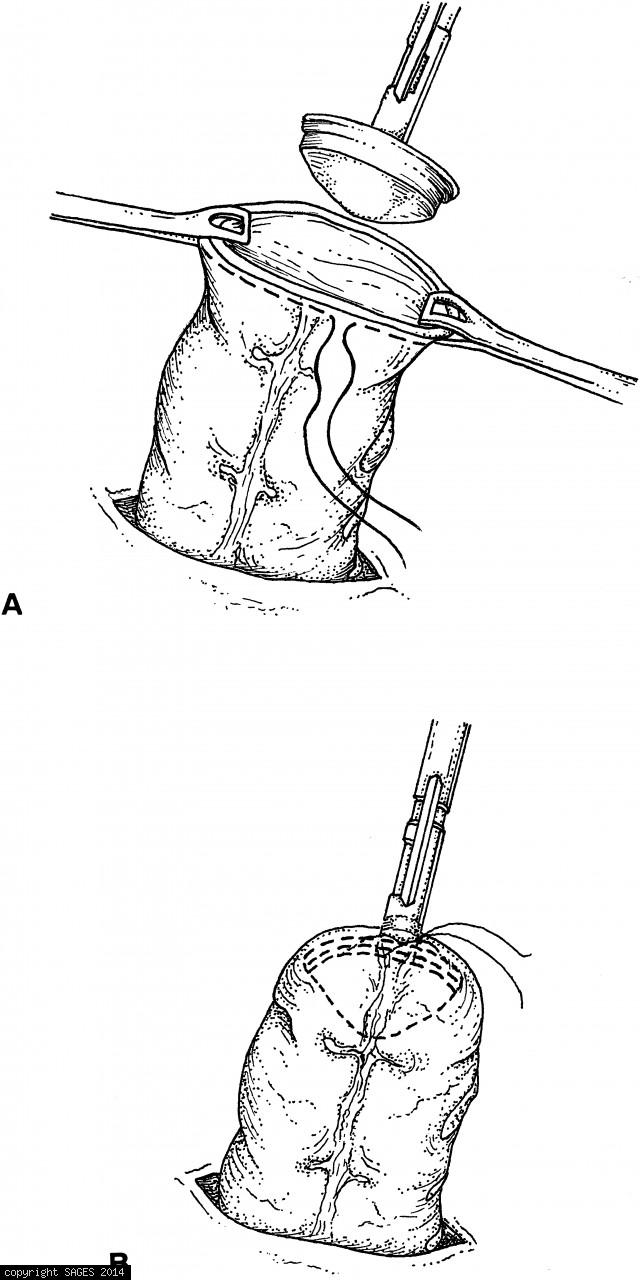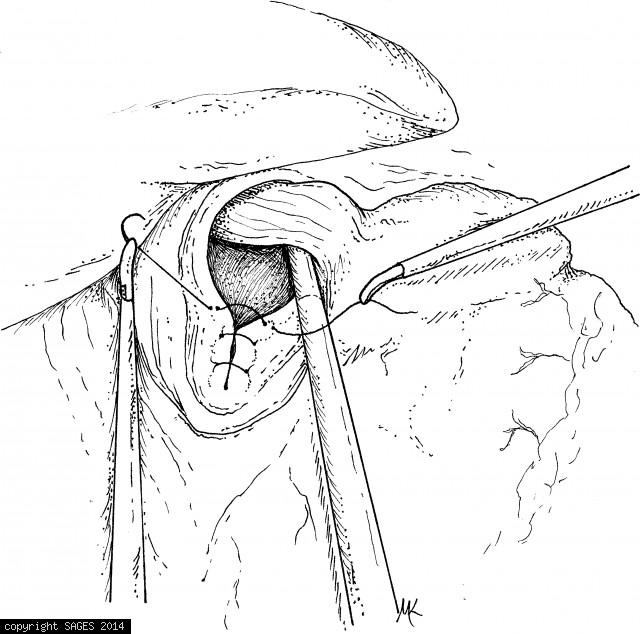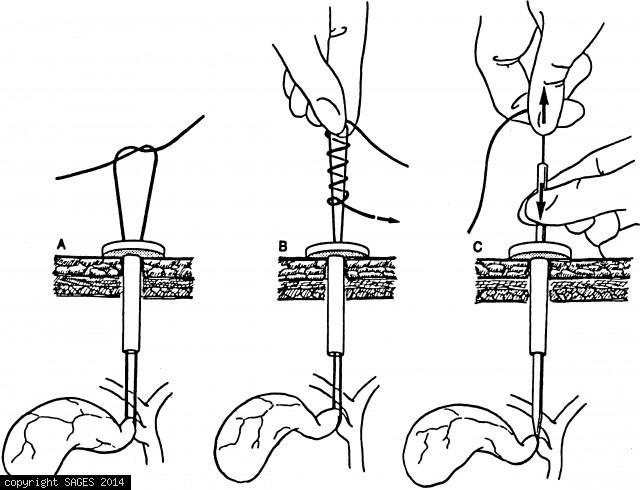Braided suture snared by the endoscopist
The braided suture is snared by the endoscopist and will be drawn back through the esophagus to exit through the mouth.
Method of mesh fixation
Method of mesh fixation with a suture passer. Use the suture passer to introduce the suture through the musculofascial layer, the mesh, and then back out through all layers as a mattress suture. Use four to eight mattress sutures to anchor the mesh, depen
Firing and Removing the Stapler
The stapler has been fired and removed. The staple line has been inspected for hemostasis and is being closed with a simple running suture.
Inspecting the staple line for hemostasis
After the staple line has been inspected for hemostasis, the enterotomies are closed with a running suture. (Reprinted with permission from Bogen GL, Mancino AT, Scott-Conner CE. Laparoscopy for staging and palliation of gastrointestinal malignancy. Surg
Trocar Placement
Trocar placements for distal pancreatectomy. These sites are proper for both splenic salvage and with splenectomy. There should be at least a hand’s breadth distance between trocars 1, 3, and 4. The trocar for the laparoscope should be above the umbilicus
The anvil of the circular stapler
A. The anvil of the circular stapler is inserted in the proximal end of the bowel (which has been drawn out of the abdomen through an enlarged trocar site). B. The pursestring suture is tied. The bowel is then returned to the abdomen.
Closure of the Crural Opening
The crural opening is closed with simple, interrupted nonabsorbable suture (0 Ethibond). For large defects, pledgets and/or bioprosthetic mesh may be used.
Proper Orientation of the Fundic Wrap
The fundoplication is sutured in place with a single U-stitch of 2–0 Prolene pledgeted on the outside. A 60-French mercury-weighted bougie is passed through the gastroesophageal junction prior to fixation of the wrap to assure a floppy fundoplication. Ins
Extracorporeal knot
Extracorporeal knot. Bring a long suture into the laparoscopic field, leaving its tail outside the port. Place the stitch; then bring the needle end out through the same port. Create a Roeder knot by tying an overhand knot and then wrapping the suture tai

